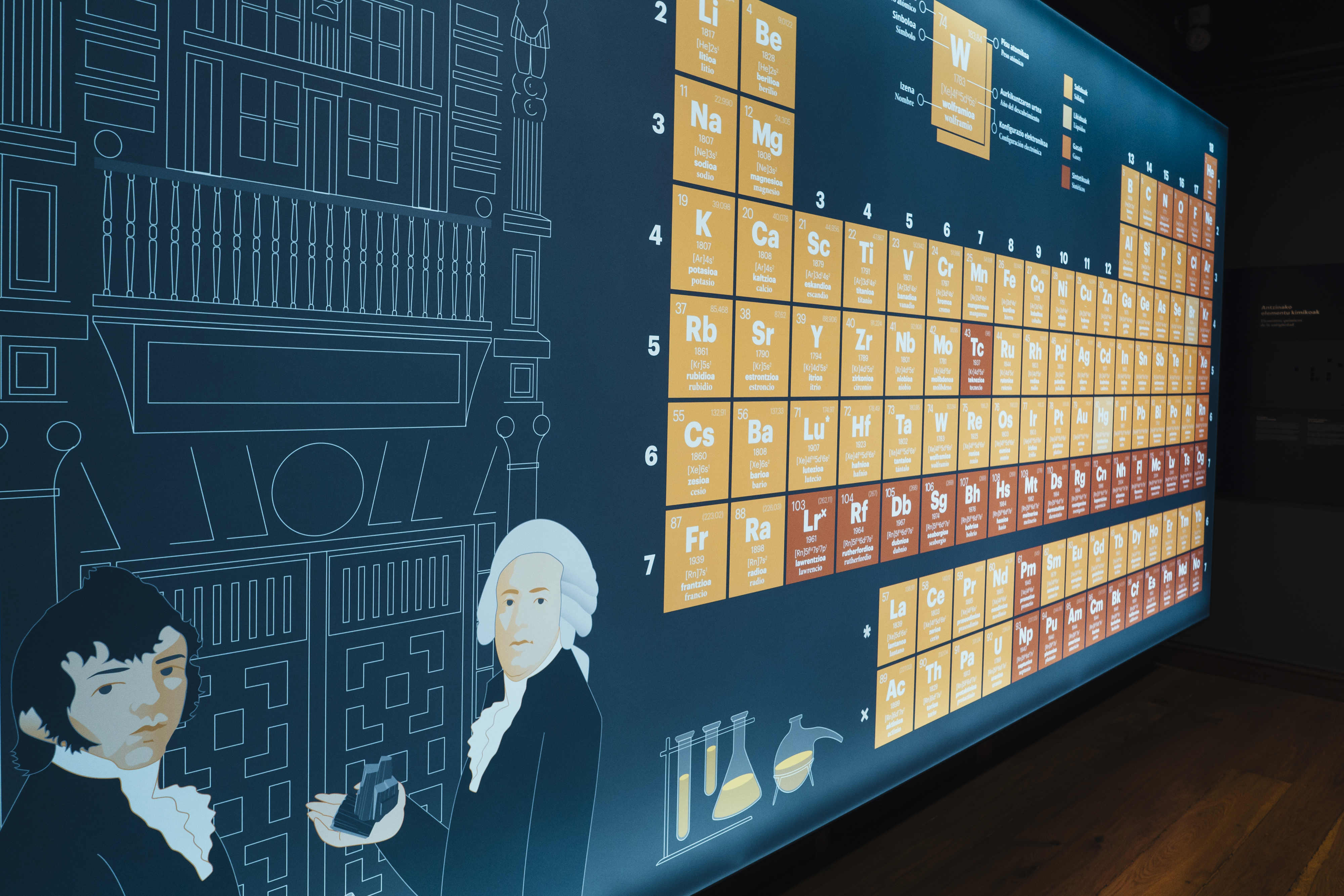In 2019/2020, the museum held an ambitious exhibition on the Periodic Table, coinciding with the anniversary of the invention. In this exhibition, visitors can learn about the chemical components that make up our world and their organization, learn the relationship of chemical elements with humans and nature, as well as the history of chemical discoveries.
In this exhibition, we show the visitor the importance of the invention of the periodic table and pay tribute to the Elhuyar brothers, who in 1783, managed to isolate tungsten in the facilities of the Chemical Laboratory created in 1778 associated with the Bascongado Patriotic Seminary of Bergara.
Room 1: Evolution of the Periodic Table
The creation of the periodic table is one of the most representative milestones in the history of science. In this first room, the periodic table is presented in interactive format, its function and its evolution until reaching its current configuration and the characteristics of each of the chemical elements that compose it.
Room 2: Discovery of tungsten and the Elhuyar brothers
Scientific research proposes to provide new facts, data, relationships or laws. In Bergara, it was the Elhuyar Hermoans who, through a scientific method, managed to isolate tungsten in 1783. This second space is dedicated to the discovery of tungsten and the importance of Bergara in this finding.
Room 3: The Table of Abundance
In the last room we will know the Table of Abundance, created by the European Chemical Society (EuChemS) and presented at the European Parliament in 2019. This periodic table collects the natural chemical elements and represents the abundance or scarcity of each of them on Earth. The table of abundance will help us understand which resources we should protect, as they are at serious risk of supply in the coming years.






